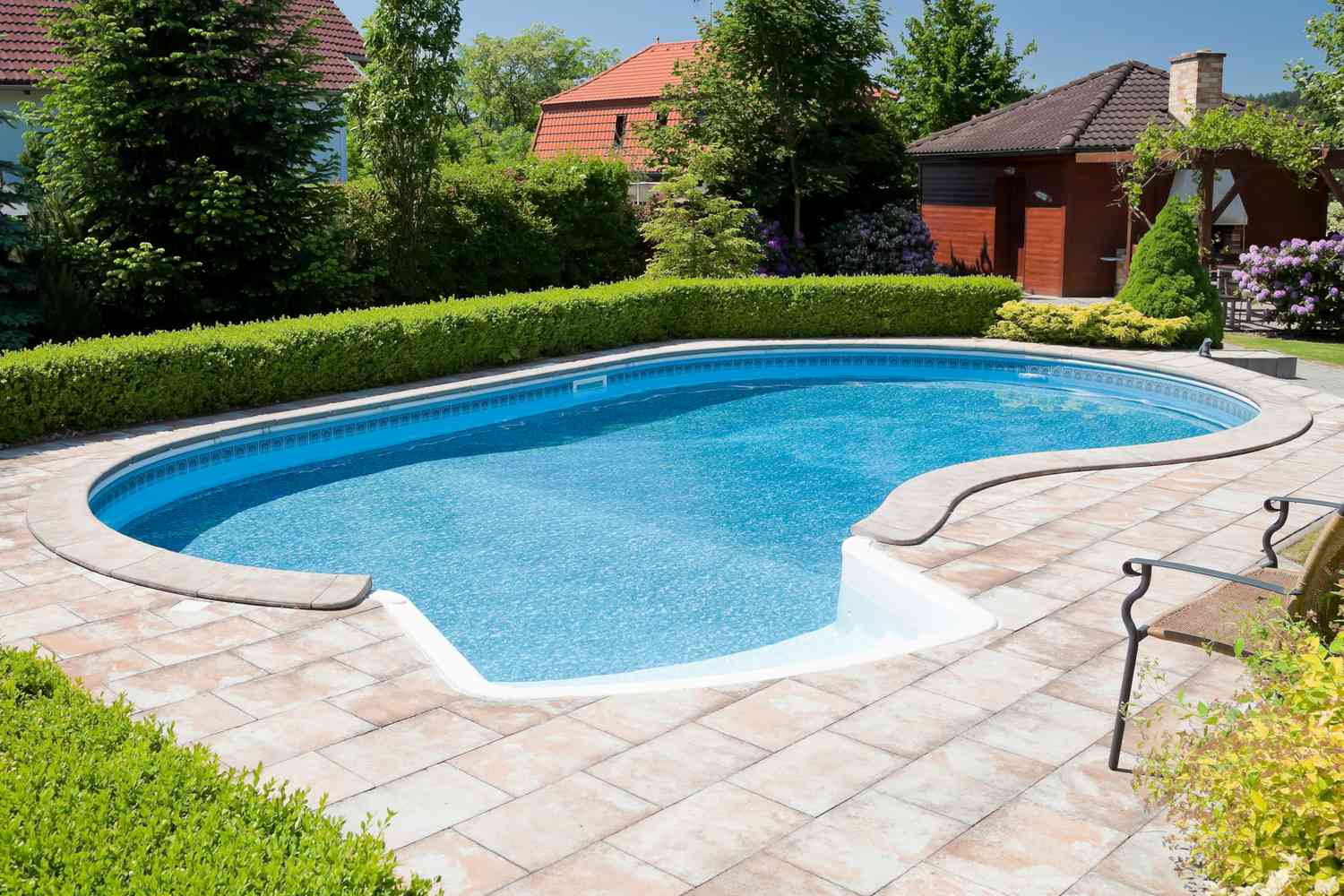When designing or renovating a swimming pool, one of the most important decisions you’ll make is choosing the right pool plaster. It’s more than just a cosmetic layer—it protects the pool’s interior, provides a smooth surface, and contributes significantly to the water’s aesthetic. With the right plaster, you can give your pool a luxurious look while ensuring durability.
From classic white to rich hues and textured finishes, pool plaster comes in various types and styles. This guide explores the different options, associated costs, aesthetic effects, and maintenance tips to help you keep your pool in pristine condition. Whether you’re a first-time pool owner or planning a refurb, understanding pool plaster is essential for long-term satisfaction.
What is Pool Plaster and Why It Matters
Pool plaster is the final coating applied to the interior shell of a concrete or gunite pool. This smooth layer seals the surface, preventing water from seeping into the structure. Think of it as the skin of your pool—it enhances both function and beauty. Unlike interior plaster walls, this blend is designed to resist constant water pressure, chlorine, and changing temperatures.
Typically made from a mixture of cement, sand, and water, pool plaster can be customised with pigments and aggregates for added strength and colour. This isn’t your average plaster of paris or wall coating. The finish can range from a sleek marble look to a rugged pebble texture. It transforms a plain concrete shell into a luxurious aquatic escape.
Types of Pool Plaster Finishes Available
The traditional white pool plaster remains a favourite for its clean appearance and affordability. It gives the water a light blue hue and suits both modern and classic pool designs. However, it can become porous over time, leading to staining and rough patches. That’s where upgraded plaster types come in—each with unique benefits.
Quartz plaster, enhanced with crushed quartz for added resilience, offers a shimmering finish and greater resistance to chemical damage. Then there’s pebble plaster, made by blending small river stones into the mix. This option mimics the look of natural bodies of water and is extremely long-lasting. Some finishes even resemble venetian plaster or artistic plaster wall coating, creating a spa-like feel in your backyard.
Pool Plaster Colours and Visual Impact

The colour of your pool plaster has a direct effect on how your pool water looks. Lighter colours like white, sky blue, and beige create a tropical feel, making the water appear bright and clean. On the other hand, darker plasters—such as charcoal, deep blue, or even black—offer a dramatic, reflective effect reminiscent of natural lagoons.
Coloured plaster is achieved by adding mineral-based pigments to the mix. If you’re after a unique vibe, consider tints that mimic natural materials like lime plaster or the warm tones of mustard plaster. Some designers draw inspiration from plaster art or historical styles like tadelakt plaster, blending creativity with functionality. The visual options are virtually endless, allowing homeowners to create a one-of-a-kind poolscape.
Pool Plaster Cost: What to Expect
Cost is a key consideration when planning a pool plaster project. Prices vary depending on the type of plaster, pool size, and local labour rates. Standard white plaster is the most budget-friendly, typically starting from around £3,000 to £5,000 for an average-sized pool. Quartz and pebble finishes, while more expensive, offer better longevity and less maintenance.
Don’t be tempted to cut corners with DIY mixes like plaster of paris. Though useful for quick art projects or even patching plaster walls, they lack the durability needed for underwater use. Professional application ensures proper bonding, uniform coverage, and a flawless finish. Investing in quality now can save thousands in future plaster repair and premature resurfacing.
The Pool Plastering Process Explained
The pool plastering process involves draining the pool, prepping the surface, applying the plaster mix, and curing it properly. This meticulous process begins by removing any existing plaster, checking for structural damage, and cleaning the surface. A bonding agent is then applied to help the new pool plaster adhere properly.
Once the plaster is applied, it must be hand-trowelled to create a smooth finish. The curing process is critical—usually taking 7 to 10 days. During this time, the pool must be filled carefully, brushed twice daily, and chemically balanced to prevent staining or cracking. Much like applying venetian plaster indoors, skill and patience are key to achieving a professional look.
How to Maintain Your Pool Plaster Finish
Regular maintenance extends the life of your pool plaster and keeps it looking new. Start with weekly brushing to prevent algae, calcium build-up, and debris stains. Water chemistry is crucial—keeping pH, alkalinity, and calcium levels balanced prevents surface damage and discolouration.
Seasonal inspections help catch minor issues before they become costly repairs. If you notice cracks, flaking, or stains, prompt plaster repair can prevent deeper structural problems. Sometimes, pests like plaster bagworms or plant growth in nearby areas can affect the pool environment. Good landscaping and pest control around the pool area also help protect the plaster surface.
Common Pool Plaster Problems and Solutions
Over time, pool plaster may develop cosmetic or structural issues. Crazing (fine surface cracks), delamination (blistering), and etching (chemical erosion) are among the most common problems. These can result from poor installation, improper curing, or chemical imbalance. Routine checks and expert care reduce the risk significantly.
When issues do occur, patching can be done using special underwater plasters—far more reliable than household materials like plaster of paris. In severe cases, a full replaster may be necessary. Many pool owners turn to textures resembling lath and plaster or artistic finishes to give their old pool a modern upgrade. If done right, the new finish will look fresh for years to come.
When and Why to Replaster Your Pool
A well-maintained pool plaster surface can last between 8 and 15 years. However, if you begin to notice roughness underfoot, heavy staining, or exposed aggregate, it may be time to replaster. These signs not only affect appearance but also compromise structural integrity and swimmer comfort.
Replastering breathes new life into an ageing pool. Whether you’re sticking with a classic white look or opting for something artistic inspired by plaster caster or even quirky references like Stuck in Plaster, this renovation adds value and enhances enjoyment. A timely update ensures your pool remains both a beautiful and safe space for family and friends.
Conclusion
From functionality to visual appeal, pool plaster plays a vital role in your swimming pool’s longevity and charm. By choosing the right type, colour, and maintenance routine, you can enjoy a luxurious pool experience for years to come. Whether you prefer a minimalist design or an artistic finish, modern plaster options cater to every taste and budget.
Remember, professional installation and regular upkeep are essential. Don’t compromise with low-quality materials—invest in the right pool plaster solution today to avoid costly repairs tomorrow. With the right choices, your pool will continue to dazzle season after season.
FAQs
What is the best type of pool plaster for durability?
Quartz and pebble finishes offer excellent durability and are resistant to chemical and physical wear.
How often should a pool be replastered?
Most pools require replastering every 8 to 15 years, depending on usage and maintenance.
Can you paint over pool plaster?
While pool paint exists, it’s not a long-term solution. Replastering is more durable and visually appealing.
Is pool plaster better than tile?
Tiles are decorative but more expensive. Pool plaster provides a seamless and smooth finish at a lower cost.
Can I use plaster of paris for small pool repairs?
No, plaster of paris isn’t water-resistant and shouldn’t be used in swimming pool applications. Use pool-grade repair materials instead.
You may also read: What is a Paper Doll Printable?


